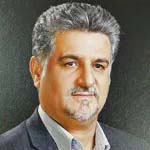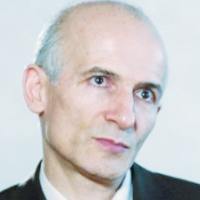Identifying Lifelong Learning pillars in University
Learning can result from formal, non-formal or informal interactions (Chris Duke & Hinzen, 2010). Because learning occurs every day and during every period of life, finding appropriate nomenclature for how, where, and why people learn has spawned many new phrases in the literature including life-long, life-wide, and life-deep learning (Bell, 2012). There are many signs of change in educational system including; new climate of classrooms, textbooks and resources, physical space, co-location of educators and learners, bounded curriculum (Siemens & Matheos, 2010), online learning, new learning and teaching style, new funding mechanism, new organizing and controlling and changing interaction between families and educational systems. These signs are only some of the new trends in educational systems. In information era, based on changes in work places, educational systems have some emerging features including; Continuous progress, out coms base learning, individualized testing, performance - based assessment, personal learning plans, cooperative learning, teachers as coach or facilitator of learning, thinking, problem solving skills and meaning- making communication skills. Education can take place in formal, non-formal and informal venues (Chris Duke & Hinzen, 2010). Formal education is a process of transforming knowledge, skills, and abilities and is typically delivered by trained teachers within schools, colleges, universities or official institutions with defined stages. This kind of education need systematic planning, organizing insight of formal educational systems, spanning lower primary school and the upper reaches of the university (La Belle, 1982). Non-formal education are placed outside the formal systems and plays supportive roles in beside of formal education, in fact person attending these forms of education makes it for own reasons (Tudor, 2013), for example community-based sports programs, professional conferences and continuing professional development. Informal education deals by every time and everywhere experience that are not organized or systematic (Etling, 1993). There is no segmentation for informal education but Formal education is commonly segregated formally into such stages as kindergarten, primary school, secondary school and higher education. Change in the environment is inevitable, constant and dynamic. Change is the result of new and evolving technologies, efforts toward globalization, demographic shifts, moves toward environmental sustainability, urbanization, social and cultural changes, shifts in the labor markets and economic and political challenges (Deegan & Martin, 2018). In light of inevitable change and in order to retain vibrancy, organizations must not only acknowledge the need for change but also be willing and able to exchange outdated inefficient structures for more robust adaptable alternatives. In information era, based on changes in work places, educational systems have some emerging features including; Continuous progress, out coms base learning, individualized testing, performance - based assessment, personal learning plans, cooperative learning, teachers as coach or facilitator of learning, thinking, problem solving skills and meaning- making communication skills.
This research was a mixed study with exploratory method. A qualitative design with recontextualization approach was selected to carry out the research. Semi structured in-depth interviews were conducted with 16 educational experts. Data were analyzed using inductive coding of phrases and words from participant interviews and documents analysis. The reliability of the interviews was obtained through credibility, transferability. The descriptive-correlational method applied in the quantitative part. The research participants included 120 for the first stage and 378 public university professors for the second stage who were selected by stratified and simple random sampling. The study used the researcher-made survey questionnaire as a principal tool for gathering data. Face validity, content validity and construct validity (exploratory factors analysis) were used for studying validity. The reliability of it was calculated via Cronbach's alpha. The quantitative data have been analyzed by descriptive and inferential tests (exploratory and confirmatory factor analysis).
The quantitative and qualitative results of this study classified the components of lifelong learning into four pillars: learning to learn, learning to do, learning to live together and learning to be. Lifelong learning is becoming a necessity in many countries educational policies and these countries have ongoing strategies for extolling lifelong learning pillars in their universities. These pillars combined with personal responsibility are required for attainment of LLL goals (Nesbit, Dunlop, & Gibson, 2013). The pillars are key features of lifelong learning that offer systemic learning, learner centralization, emphases on motivation, and a focus on multiple objectives in the learning process (OECD, 2001). In our model, these four pillars illustrate the open loop process for lifelong learning. Based on our model, the lifelong learner start her/his learning in informal shape then they enter formal educational systems (kindergarten, primary school, secondary school and higher education), After passing successfully all stages, people come back to the complex milieu and play role in the labor market or society. This is not the end of the story, facing with new learning needs in workplaces, emerging new technology and demands in labor markets push people to go to the formal educational system to be updated with new conditions. Maybe this open loop cycle be continued until the human die. Lifelong learning is a process of learning that happen in all human life and includes all formal, non-formal and informal learning. Considering needs for specific skills and competencies in future Lifelong learning includes all forms of learning that develop individuals’ knowledge, skills and critical thinking abilities through interactions with the environment. Increasingly LL and education are becoming important to career success in higher education (Moxley, Najor-Durack, & Dumbrigue, 2001). There are six characteristic elements that are necessary to support a lifelong learning in higher education: 1) overarching regulatory, financial, and cultural/social frameworks 2) strategic partnerships and linkages 3) research 4) teaching and learning processes 5) administrative policies and mechanisms 6) student support systems and services (United Nations Educational Scientific and Cultural Organization, 2001). Responding to subsequently changes in Higher education missions, changes in the educational environment and shifting needs cause that higher education will be different from the way it is today and there will be mass adoption of learning styles and methods in universities and colleges. Universities and colleges will have to undertake an important role in responding to the demand for LLL (Jongbloed, 2002), So lifelong learning included a combination of formal and informal learning in higher education.
- حق عضویت دریافتی صرف حمایت از نشریات عضو و نگهداری، تکمیل و توسعه مگیران میشود.
- پرداخت حق اشتراک و دانلود مقالات اجازه بازنشر آن در سایر رسانههای چاپی و دیجیتال را به کاربر نمیدهد.



